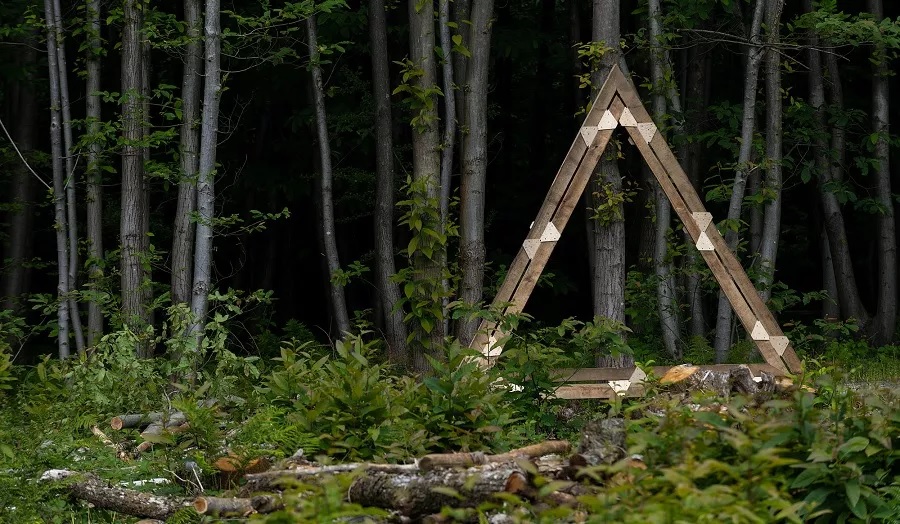The project is one of 17 projects nationwide to receive Woods into Management Forestry Innovation funding from the government, and one of only two highlighted as a regional case study.
Date: 14 January 2022
HomeGrownHouse, a project developed by London Met's Associate Professor George Fereday, in collaboration with Grown in Britain and the Birling Estate, has been highlighted by the Forestry Commission as a national case study in a new government blog.
The project is one of 17 projects nationwide to receive Woods into Management Forestry Innovation funding from the government. Of these 17 projects, HomeGrownHouse was one of only two highlighted as a regional case study.
HomeGrownHouse explores the use of sweet chestnut wood for building in the UK. As a durable, straight growth and dimensionally stable timber, it is well suited for use in buildings. However as Fereday notes, "very little UK grown sweet chestnut is used in construction. The majority is converted into fencing or burnt as biomass."
In the blog, he discusses how the project challenges this status quo by exploring new, value-added uses for coppiced sweet chestnut in buildings in the SE of England, where the highest number of new-start building projects sit alongside the most abundant coppiced sweet chestnut.
He writes, "The HGH project addresses these issues by designing building components with a range of small, medium and large diameter roundwood. We designed a building 'kit of parts' with a low-waste, high yield philosophy, leading to components that are cost-competitive with imported alternatives. To achieve milling efficiency, new cutting techniques were tested for repeatability on mobile sawmills, ensuring they could be reproduced elsewhere in the UK.
When coppiced, sweet chestnut re-grows multiple, straight lengths of roundwood from each 'stool'. Coppicing is also naturally regenerative and harvesting in this way encourages higher levels of biodiversity than other monoculture woodlands. Coppice forestry also creates skilled rural jobs. By linking forestry practices, ecology and construction, the HGH project has forged new connections that contribute to a sustainable local timber supply chain."
The current phase of the project will result in a prototype cabin on the Birling Estate. This will serve as a demonstrator showcasing the first use of small diameter sweet chestnut and ash in a structural insulating panel.

